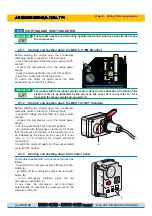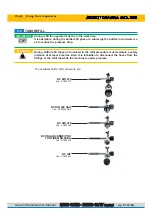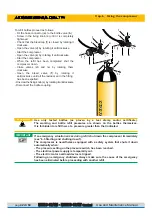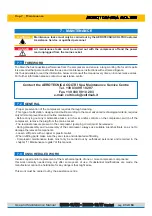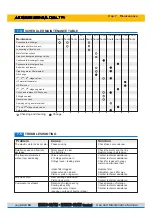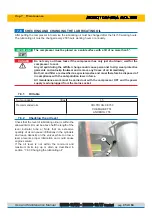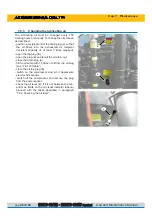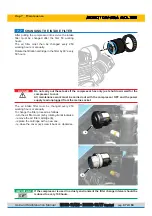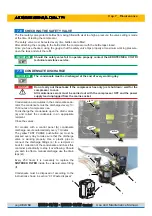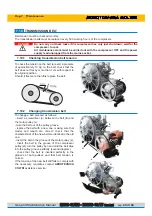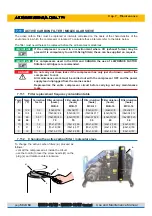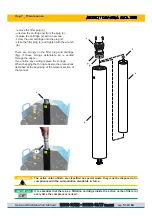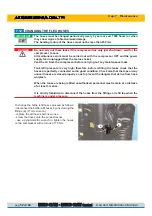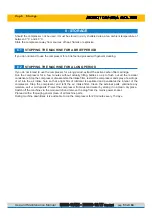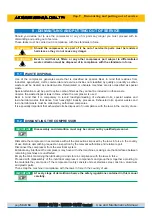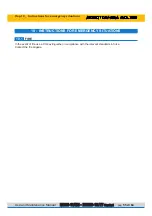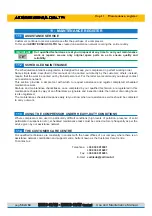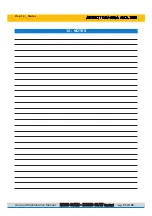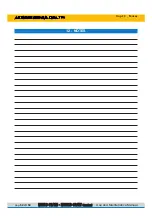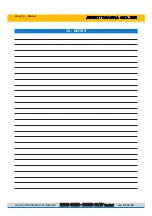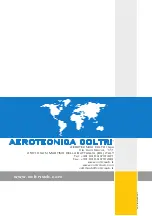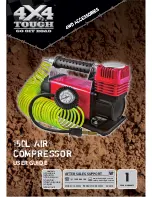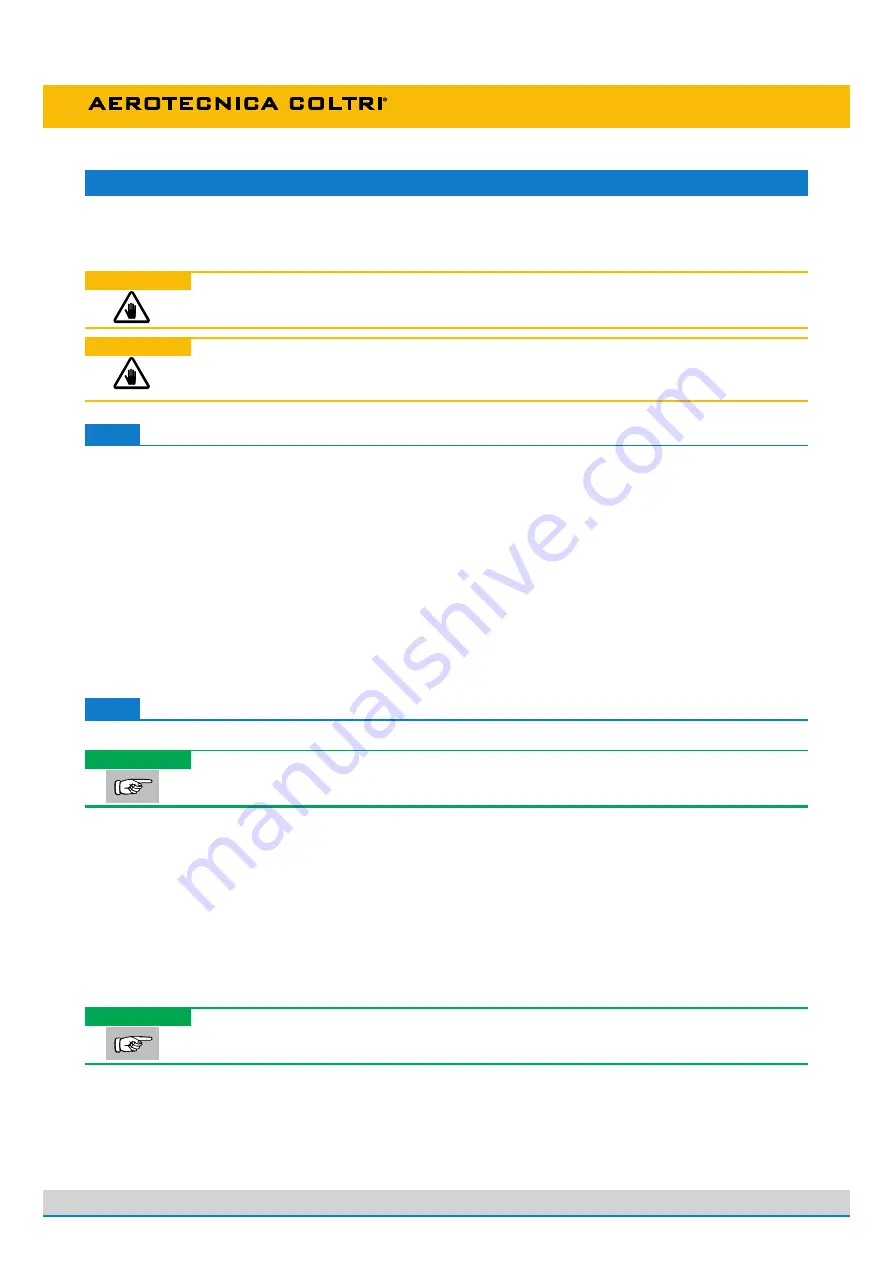
pag.
54 di 64
Use and Maintenance Manual
M
MCCHH88--1111//EEM
M -- M
MCCHH1133--1166//EETT
Standard
Cap.9 _ Dismantling and putting out of service
9 - DISMANTLING AND PUTTING OUT OF SERVICE
Should you decide not to use the compressor or any of its parts any longer you must proceed with its
dismantling and putting out of service.
These tasks must be carried out in compliance with the standards in force.
WARNING
Should the compressor, or a part of it, be out of service its parts must be rendered
harmless so they do not cause any danger.
WARNING
Bear in mid that oil, filters or any other compressor part subject to differentiated
waste collection must be disposed of in compliance with the standards in force.
WASTE DISPOSAL
9.1
DISMANTLING THE COMPRESSOR
9.2
Use of the compressor generates waste that is classified as special. Bear in mind that residues from
industrial, agricultural, crafts, commercial and service activities not classified by quality or quantity as urban
waste must be treated as special waste. Deteriorated or obsolete machines are also classified as special
waste.
Special attention must be paid to active carbon filters as they cannot be included in urban waste:
observe the waste disposal laws in force where the compressor is used.
Bear in mind that it is compulsory to record loading/unloading of exhausted oils, special wastes and
toxic-harmful wastes that derive from heavy/light industry processes. Exhausted oils, special wastes and
toxic-harmful waste must be collected by authorised companies.
It is especially important that exhausted oils be disposed of in compliance with the laws in the country of use.
Dismantle the compressor in accordance with all the precautions imposed by the laws in force in the country
of use. Before demolishing request an inspection by the relevant authorities and relative report.
Disconnect the compressor from the electrical system.
Eliminate any interfaces the compressor may have with other machines, making sure that interfaces between
remaining machines are unaffected.
Empty the tank containing the lubricating oil and store in compliance with the laws in force.
Proceed with disassembly of the individual compressor components and group them together according to
the materials they are made of: the compressor mainly consists of steel, stainless steel, cast iron, aluminium
and plastic parts.
Then scrap the machine in compliance with the laws in force in the country of use.
IMPORTANT
Disassembly and demolition must only be carried out by qualified personnel.
IMPORTANT
At every stage of demolition observe the safety regulations contained in this manual
carefully.

